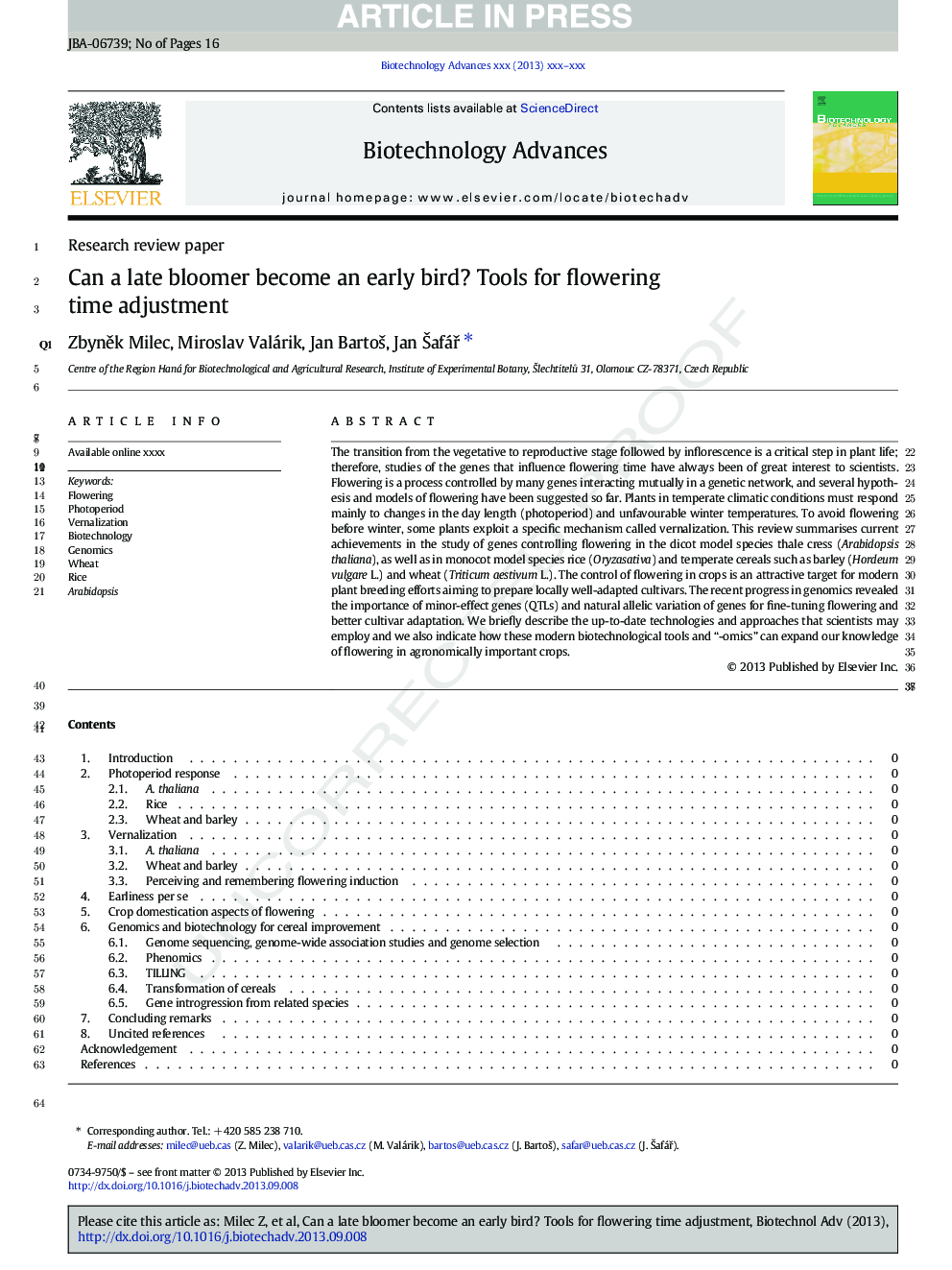| Article ID | Journal | Published Year | Pages | File Type |
|---|---|---|---|---|
| 10231645 | Biotechnology Advances | 2014 | 16 Pages |
Abstract
The transition from the vegetative to reproductive stage followed by inflorescence is a critical step in plant life; therefore, studies of the genes that influence flowering time have always been of great interest to scientists. Flowering is a process controlled by many genes interacting mutually in a genetic network, and several hypothesis and models of flowering have been suggested so far. Plants in temperate climatic conditions must respond mainly to changes in the day length (photoperiod) and unfavourable winter temperatures. To avoid flowering before winter, some plants exploit a specific mechanism called vernalization. This review summarises current achievements in the study of genes controlling flowering in the dicot model species thale cress (Arabidopsis thaliana), as well as in monocot model species rice (Oryza sativa) and temperate cereals such as barley (Hordeum vulgare L.) and wheat (Triticum aestivum L.). The control of flowering in crops is an attractive target for modern plant breeding efforts aiming to prepare locally well-adapted cultivars. The recent progress in genomics revealed the importance of minor-effect genes (QTLs) and natural allelic variation of genes for fine-tuning flowering and better cultivar adaptation. We briefly describe the up-to-date technologies and approaches that scientists may employ and we also indicate how these modern biotechnological tools and “-omics” can expand our knowledge of flowering in agronomically important crops.
Related Topics
Physical Sciences and Engineering
Chemical Engineering
Bioengineering
Authors
ZbynÄk Milec, Miroslav Valárik, Jan BartoÅ¡, Jan Å afáÅ,
